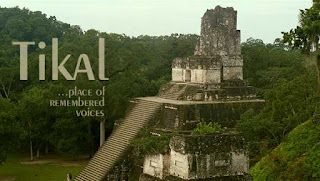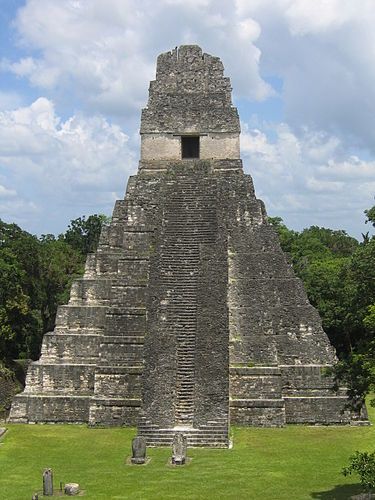
Tikal National Park Main Page
General Info

| Area/Region | El Petén |
|---|---|
| Country | Guatemala |
| Website | http://www.parquetikal.com.gt/ |
| Place Name | Tikal National Park |
Overview
Tikal National Park embodies the richest essence of Mayan history and biodiverse rainforests. It occupies a huge area of 575 square kilometers and vividly depicts a thousand-year-old civilization.
The park, widely known for its archaeological significance, contains more than 3,000 structures, including ceremonial platforms, palaces and intricately carved stelae. The lush canopies of the towering temples are among the most iconic, offering panoramic views of the ruins and labyrinthine rainforest.
The magnificence of the site is not limited to the ruins. It is a treasure house of biodiversity, with more than 400 species of birds, five species of cats and countless monkeys, amphibians and reptiles. In the abundance of wildlife, visitors can immerse themselves in a surreal symphony of forest sounds, creating an unparalleled sensory journey.
- Tikal National Park is not only a place of archaeological and historical significance; it is also a place of pilgrimage for culture vultures, historians, archaeologists and nature lovers.
- As a UNESCO World Heritage Site, it plays an indispensable role in preserving the legacy of the Mayan civilization and offers visitors an in-depth understanding of their extraordinary architectural, artistic and scientific progress.
Finally Tikal National Park combines the enigmatic past of Mayan civilization with Guatemala's thriving biodiversity, making it an unforgettable epicenter of exploration and discovery.
History
History of Tikal National Park
Tikal National Park, located in present-day Guatemala, has deep-rooted historical significance and thrives on the impressive legacy of the Mayan civilization, dating back to the 1st century AD.
As a symbol of the Classic Maya period, the city of Tikal flourished between the 6th and 10th centuries. and became one of the dominant cultural centers of the ancient society. It was during this period that the city reached its architectural peak and became recognizable for its impressive temples, palaces and public squares.
Historians believe that Tikal was mysteriously abandoned by the Mayans in the late 10th century, and its prestigious structures were gradually protected by the dense forests of Guatemala. The city remained largely unknown until the middle of the 19th century, when European explorer Modest Mendez stumbled upon it during an expedition.
The rediscovery led to a series of archaeological expeditions to unearth the hidden treasures of the abandoned city. Due to the historical wealth of Tikal in 1955 it was included in the national park, and in 1979 - to the UNESCO world heritage list.
Today, the grandeur of Tikal is a vivid reminder of the former glory of the Mayan civilization and appeals to history and nature lovers.
Geography and Natural Features
Tikal National Park is a great testament to the power of the ancient Mayan civilization. Located in the heart of Guatemala's northern lowland rainforest region, the park is a symbiosis of natural majesty and human ingenuity.
The surrounding tropical rainforest is rich in biodiversity. Impressive trees such as the Ceiba, Guatemala's national tree, soar high into the sky, and the forest floor is teeming with insects, birds and animals that find refuge in this thriving ecosystem. The park also has five tropical lakes that offer tranquility.
At Tikal, limestone is the main feature, forming iconic monuments that decorate the landscape and influence the area's water system, and numerous streams disappear into the depths of the rock substrate. The highest point in the park, Temple IV rises nearly 70 meters above the forest floor, offering breathtaking views of the vast canopy and beyond.
- Templo del Gran Jaguar (Temple I) and Templo de las Mascaras (Temple II) stand in front of the Grand Plaza, the secular and the religious. in the heart of the park. The square is surrounded by many buildings, each of which is a unique monument to the city's past.
- North Acropolis and Central Acropolis reveal a complex labyrinth of small palaces and administrative buildings.
- The Mundo Perdido (Lost World) complex is a phenomenal ensemble of ceremonial structures, including a huge step pyramid.
The
Steeped in mystical charm, Tikal National Park is a true cultural and natural treasure. It includes the ever-changing history of human civilization and the amazing abundance of nature.
Influence and Legacy Features
Impact and Legacy: Tikal National Park has a significant impact both culturally and ecologically. The rich ancient Mayan sites provide an in-depth understanding of ancient civilizations and shape today's knowledge of our past. The park is valued for its important role in world heritage, and Tikal's architectural and artistic achievements demonstrate the splendor of the Mayan civilization.
- The park's most significant influence is recognized as the way it inspired many elements of popular culture, including movies, literature, and video games.
- Environmentally, Tikal National Park continues to educate and lead global conservation efforts in light of its rich biodiversity. The park is a haven for various endemic and endangered animal species and plays a crucial role in the conservation of global biodiversity.
In essence, Tikal's legacy is extensive. The park is a beacon of our shared human heritage, a testament to the ingenuity of our ancestors and a beacon of biodiversity conservation. Its universal relevance remains, so the story will continue to inspire and inform future generations.
References
TrendingFan Content
So far, there is no trending fan content for this particular universe. Explore all available content and find something you might like!
